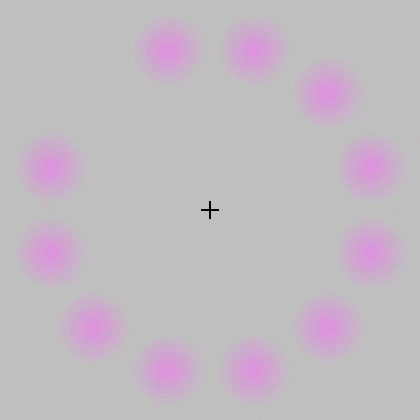Afterimages play a crucial role in color perception, significantly impacting the aesthetics of photography and the emotional responses of viewers. This fascinating phenomenon reveals how our eyes and brain process colors, leading to temporary visual effects that can enhance or alter an image’s impact. Understanding afterimages is essential for photographers, as it has profound implications for color theory and offers practical insights for creatively harnessing this effect in their work. This article will focus on the concept of afterimages, exploring their relevance and providing tips for incorporating them into photographic practices.
What Are Afterimages?
An afterimage occurs when the retina continues to perceive a color after the stimulus has been removed. This phenomenon can be categorized into two types:
- Positive Afterimages: These occur immediately after viewing a bright color. The viewer still sees the color even after looking away.
- Negative Afterimages: These happen after staring at a color for an extended period. Once the viewer shifts their gaze, they may see the complementary color as a sort of visual “ghost.


The concept of afterimages is rooted in the Opponent Process Theory, which posits that our perception of color is controlled by opposing pairs (red vs. green, blue vs. yellow). Understanding afterimages can provide photographers with powerful tools for composition and emotional expression.
The Science Behind Afterimages
When we look at a colored object, specific photoreceptors in our eyes become stimulated. However, prolonged exposure can lead to receptor fatigue. For example, staring at a bright red object for a long time will cause the red receptors to become less sensitive. When the viewer then looks at a neutral background, the fatigue of the red receptors results in a stronger perception of the opposing color, green, manifesting as a negative afterimage.
This physiological response highlights the complex interplay between light, color, and our visual perception, providing a unique opportunity for photographers to manipulate these elements.

Practical Applications of Afterimages in Photography
Understanding afterimages can significantly enhance your photographic practice. Here are several ways to apply this concept effectively:
1. Creating Impactful Compositions
By intentionally using colors that can create afterimages, you can enhance the visual impact of your photographs.
- Experiment with Color Juxtaposition: Place a vibrant color next to its complementary counterpart. For example, a bright yellow subject against a deep purple background can create a striking visual contrast that engages the viewer’s attention.
- Capture Motion or Action: In dynamic photography, such as sports or street photography, using bright colors can create afterimages that enhance the sense of movement and energy in your images.
2. Eliciting Emotional Responses
Afterimages can evoke specific emotional reactions based on the colors used.
- Utilize Color Psychology: Certain colors are associated with specific emotions. For instance, red can evoke feelings of passion or aggression, while blue is often linked to calmness. By strategically using colors that create afterimages, you can amplify these emotional responses in your photographs.
- Experiment with Length of Exposure: Consider how long you expose your subjects to certain colors. Longer exposure to a specific color can lead to more pronounced afterimages, allowing you to manipulate emotional perception.
3. Incorporating Afterimages in Post-Processing
Post-processing offers photographers another layer of control over color perception.
- Enhance or Manipulate Colors: Use editing software to amplify afterimages. For instance, if you want to emphasize the afterimage effect of green after photographing a red object, enhance the green hues during editing to create a more dramatic contrast.
- Create Surreal Effects: By layering images and utilizing blending modes, you can simulate afterimage effects. This technique can produce unique, dream-like visuals that challenge conventional perceptions.
Practical Experiment: Exploring Afterimages
To better understand and apply the concept of afterimages, conduct the following experiment:
Materials Needed:
- Camera
- Colorful objects (e.g., red, green, blue, yellow)
- A neutral background (white or gray)
- Photo editing software
Steps:
- Choose Your Color: Start with a bright color (e.g., red). Photograph it against a neutral background.
- Stare at the Color: Before moving to the next step, stare at the red object for about 30 seconds. This will help induce receptor fatigue.
- Look Away: Immediately after staring, look at a white or neutral background. Observe any afterimage that appears—typically a greenish hue in this case.
- Capture the Afterimage: If possible, take a photo of your reaction as you observe the afterimage. Alternatively, try to recreate this effect by using post-processing techniques.
- Analyze Your Images: Review the images and assess how the afterimages influence the overall perception and emotional tone of the photographs.
Conclusion
The concept of afterimages provides photographers with a fascinating insight into color theory and visual perception. By understanding how afterimages work, you can make more intentional choices in your color compositions, eliciting emotional responses and enhancing the visual impact of your work. Whether through careful selection of colors, creative post-processing techniques, or experimentation with light and exposure, the afterimage phenomenon is a valuable tool in your photographic arsenal. Embrace this concept to deepen your artistic expression and engage your audience on a more profound level!
